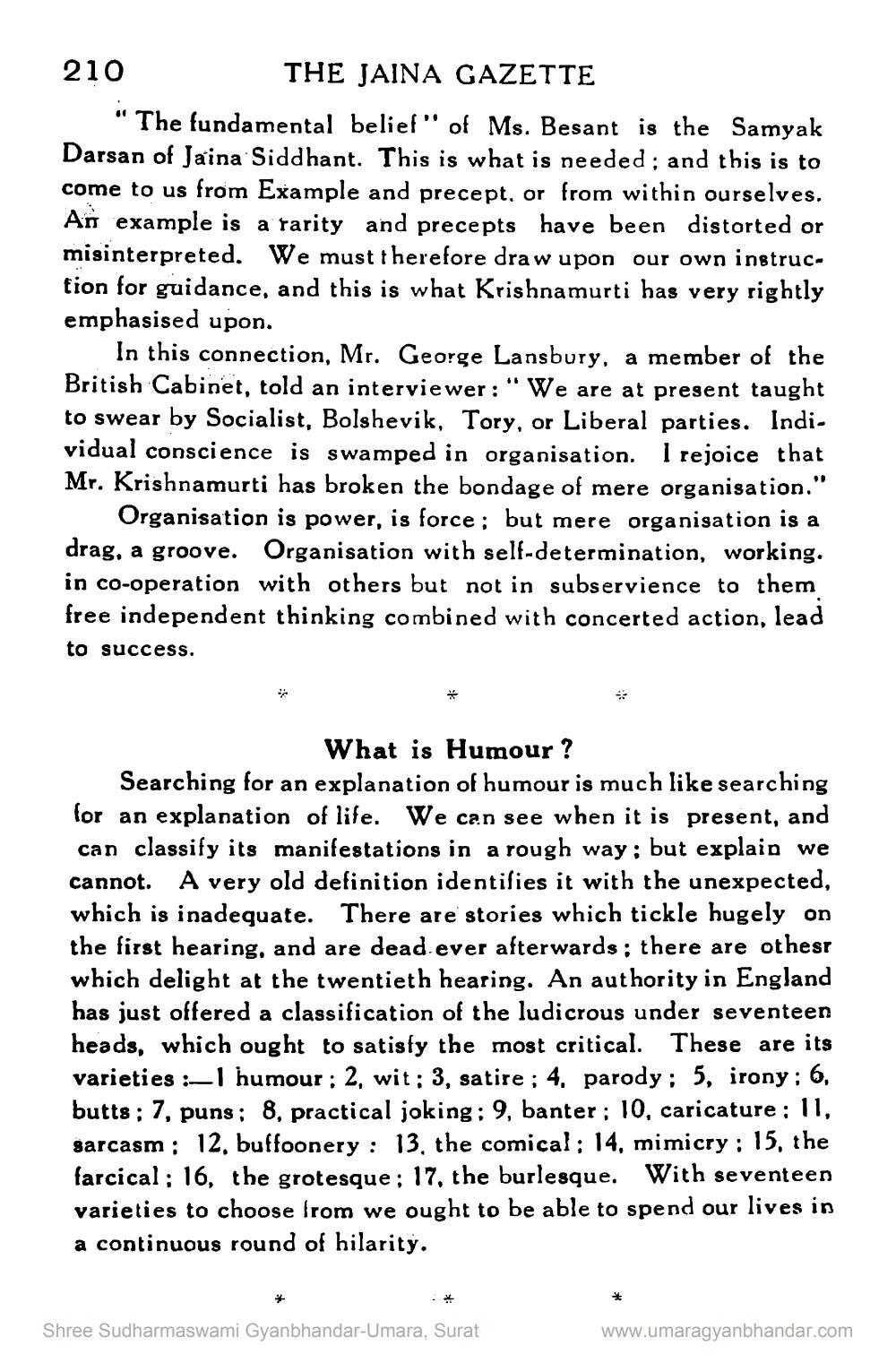________________
210
THE JAINA GAZETTE "The fundamental belief" of Ms. Besant is the Samyak Darsan of Jaina Siddhant. This is what is needed; and this is to come to us from Example and precept, or from within ourselves. An example is a rarity and precepts have been distorted or misinterpreted. We must therefore draw upon our own instruction for guidance, and this is what Krishnamurti has very rightly emphasised upon.
In this connection, Mr. George Lansbury, a member of the British Cabinet, told an interviewer: "We are at present taught to swear by Socialist, Bolshevik, Tory, or Liberal parties. Indi. vidual conscience is swamped in organisation. I rejoice that Mr. Krishnamurti has broken the bondage of mere organisation."
Organisation is power, is force; but mere organisation is a drag, a groove. Organisation with self-determination, working. in co-operation with others but not in subservience to them free independent thinking combined with concerted action, lead to success.
What is Humour ? Searching for an explanation of humour is much like searching for an explanation of life. We can see when it is present, and can classify its manifestations in a rough way; but explain we cannot. A very old definition identifies it with the unexpected, which is inadequate. There are stories which tickle hugely on the first hearing, and are dead ever afterwards ; there are othesr which delight at the twentieth hearing. An authority in England has just offered a classification of the ludicrous under seventeen heads, which ought to satisfy the most critical. These are its varieties :- 1 humour : 2, wit: 3, satire ; 4. parody: 5, irony: 6, butts ; 7, puns; 8, practical joking: 9, banter ; 10, caricature : 11, sarcasm : 12. buffoonery : 13, the comical; 14, mimicry : 15, the farcical; 16, the grotesque ; 17, the burlesque. With seventeen varieties to choose from we ought to be able to spend our lives in a continuous round of hilarity.
Shree Sudharmaswami Gyanbhandar-Umara, Surat
www.umaragyanbhandar.com




